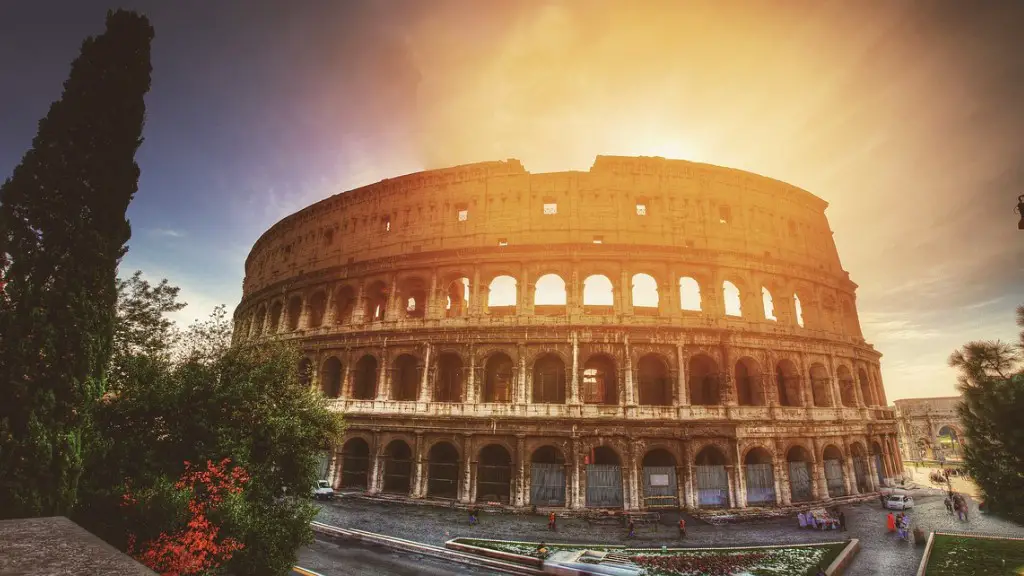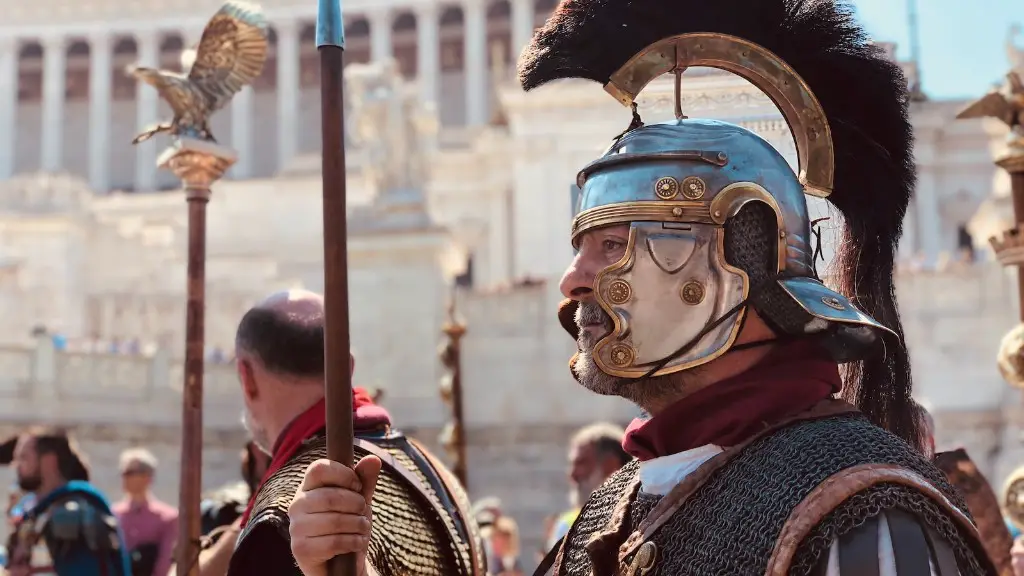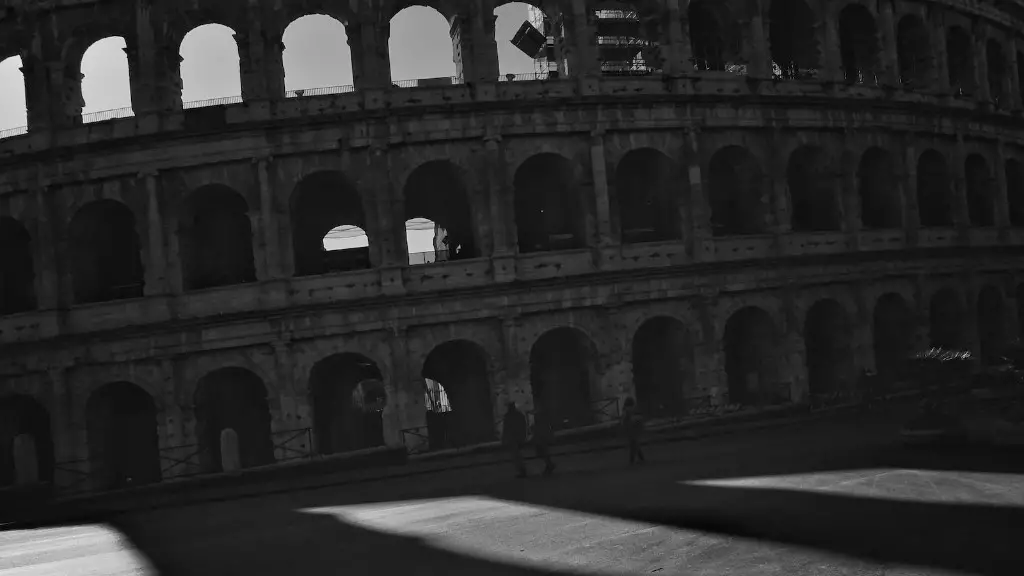The Roman Empire is one of the most famous empires in history; it spanned centuries and left an indelible mark on Western civilization. Its ambition, military conquests, engineering feats and artistry are still admired to this day. But when did the Roman Empire come into being?
Imperial Rome is generally considered to have begun in 27 BC, when Octavian was given the title of Augustus by the Senate, nicknamed ‘Princeps’ (‘first citizen’). This marked the end of the Republic and the beginning of the Roman Empire as we know it. Although he wasn’t the first dictator, Octavian was the first to transform Rome from a Republic into an orderly system of government, a feat that had eluded previous dictators.
Through hegemonic strategies and grandiose ambition, Augustus exerted power as the official head of Rome and became the figurehead of much of Western civilization during the following centuries. By granting unprecedented powers to the Senate, extending the franchise to citizens and promoting the Pax Romana (Roman Peace), the Julius-Claudian emperors—beginning with Augustus’ adoption of his nephew Tiberius—became symbols of imperial splendour, cementing the importance of imperial governance.
However, historians have argued that the beginnings of imperial Rome can be traced back to 80 BC and the rise of Julius Caesar. He was the first person to effectively bridge the class and political divisions that had hitherto been endemic to Rome’s history, uniting its many disparate interests. He also negotiated Rome’s first overseas provinces, Gaul and Britain, and annexed territories in Britain and Germany – all of which significantly increased Rome’s territory and prestige.
His assassination in 44 BC caused an outbreak of civil war that would shape the course of Roman history. A couple of years later, after defeating his rival armies, Octavian became the sole leader of Rome and the founder of the system of government that would eventually become imperial. He was named Augustus, which meant ‘venerated one’ and marked the birth of the Roman Empire.
In conclusion, the exact moment when ancient Rome became an empire is a matter of interpretation, but most agree that it began in 27 BC, when Octavian was named Augustus by the Senate. Although Julius Caesar had effectively united the people of Rome previously, it was Octavian who set the foundations of imperial Rome, through shrewd political and military strategies as well as far-reaching reforms.
The Rise of Julius Caesar
While often overshadowed by his successor, Julius Caesar was a hugely influential figure in Rome’s transition from Republic to Empire. Through his expansive campaigns, he was instrumental in conquering and annexing vast swathes of land which dramatically increased Rome’s area. He also bridged the class divisions that had existed for centuries and even created political reforms which were essential for Augustus in framing a more unified system of governance. Despite his untimely assassination in 44 BC, Julius Caesar’s legacy lives on in the Roman Empire.
Much has been made of his accomplishments as a military leader, but few realise the extent to which he sought to bring the plebeians, or lower classes, into the sphere of Roman politics. By introducing pro-plebeian legislation, he successfully removed the divisions between classes that had been entrenched since the earliest days of Rome. He also worked hard to win the loyalty of the Senate, granting them unprecedented powers and launching his own public building projects. Through these reforms, he brought the people of Rome together in a way that hadn’t been seen before.
Although Julius Caesar was ultimately unsuccessful in unifying Rome under his rule and was assassinated before he could do so, his immense contribution to the process of transforming Rome cannot be understated. He laid the groundwork for the comprehensive reforms of imperial Rome and his vision of a unified people would live on in Augustus’ rule of the Roman Empire.
Social Changes and Impacts
As the Roman Empire gained traction, it had a profound impact on the social order. Augustus’ adoption of Tiberius most notably established a Julian-Claudian dynasty, a testament to Rome’s orderly system of governance. This dynasty introduced sweeping reforms designed to bring the people of Rome together in a way that hadn’t been seen before. Augustus also extended the franchise to citizens, opening up public office to all classes of the Roman people.
Moreover, imperial Rome was a religiously diverse society with multiple religions and customs, which added to its cultural complexity. Rome’s polytheism was responsive to its ever-expanding political reach, accommodating the gods and rituals of conquered populations. Although the Roman Empire was authoritarian to its core, it also valued its religious diversity as part of its cultural treasure.
Academics have largely agreed that imperial Rome was a cosmopolitan society, embracing new emerging cultures and bridging differences between its various populations. Other scholars point out that the Roman Empire had a destabilizing effect on its conquered territories, asserting that it was oppressive in its economic and political structure. In any event, the social impacts of imperial Rome are undeniable, shaping the political future of Europe, North Africa, and the Middle East over succeeding generations.
Roman Engineering
Engineering was one of the most important legacies of imperial Rome, with a series of innovations contributing to its remarkable success. Augustus’ reign saw the rise of monumental architecture, with a distinct imperial style displayed in some of the most impressive monuments of its time. Examples include the Pantheon and Trajan’s Column, immortalizing Rome’s engineering feats for centuries to come.
Roman roads were another of imperial Rome’s formidable creations. Built across vast distances of conquered territories, these enabled trade, travel and the rapid spread of information. Julius Caesar was one of the earliest constructors of a Roman road, having designed a network to transport supplies and soldiers rapidly between Rome and Gaul. Augustus later extended these networks, adding around 50,000 miles of road to the Roman Empire.
Imperial Rome is also famed for its aqueducts, or pipes supplying water to cities and towns. Their construction was so extraordinary that large parts of them still remain in use today. An expertly constructed system of dams and canals was also devised, enabling them to support large-scale agriculture, fish farming and industry. Roman engineering is still regarded as one of mankind’s most impressive feats.
Legacy and Influence
The legacy of imperial Rome has had a lasting impact on our contemporary world. Its Latin-based language, literature and law still shape our lives, whilst its engineering feats, political innovations and artistry await discovery. Even our calendar has direct links to the Romans, from whom the week and months are still named.
In more recent times, imperial Rome has been glorified, romanticized, and studied for its unrivalled achievements and lessons for modern societies. Its meticulous organization of government, civic infrastructure and law-making have influenced modern nation-states in profound ways. The Roman Empire is also frequently referenced in popular culture, particularly in cinema and literature, further re-enforcing its reputation.
The emergence of the Roman Empire was a complex, multifaceted process that continues to fascinate historians and the general public alike. Its legacy and influence remain untouched, deeply impacting our view of the world and our own culture. Imperial Rome’s reign has come to an end, but the admiration for its grandiose empire remains.




